
Introduction
If you have ever made a payment (and I am sure you have) using a QR code, you would understand the reason for its popularity. A QR code, which until a few years ago was considered a lingo for geeks, is now being used and appreciated by the masses, due to its ease of use. The ongoing pandemic has further fuelled its acceptance and usage in the payments space.
During the pandemic and lockdown, the situation forced the majority of stores, shops & unorganized outlets to also start taking cashless transactions. Since it was inconvenient to do bank transfers or even wallet transfers, where all merchant details, bank details, mobile numbers, and other details need to be manually entered, the saviour was QR codes, as it made payments at stores and outlets simple and convenient -
scan a code > enters amount > pay - PAYMENT DONE! Easy as a breeze.
What is QR Code?
To begin with, let us first understand what a QR code is. QR codes, like bar codes, contain information in a graphic manifestation, such as a sequence of white and black patches inside a restricted region. These QR codes can be detected using digital interfaces like smartphone cameras, bringing up a world of digital data transfer opportunities.
They have robust tolerance built-in, allowing a QR code to get scanned even if a portion of it is damaged or concealed. It is also possible to encrypt QR codes. A QR code payment is made with a phone and the relevant software to scan a code and process the data within a payment app or transaction. App-to-app payments, POS/m-POS scanning for payments, and buyer scanning through a smartphone are all possible with these QR payments.
QR codes are also helpful in marketing and engaging customers, such as accruing loyalty points and redeeming them while shopping as many customers forget about it or they just don’t get into the lengthy process of showing any email or card to the retailer at the time of transaction. Discount vouchers can also be distributed as QR Codes, which have all the attributes of a physical voucher.
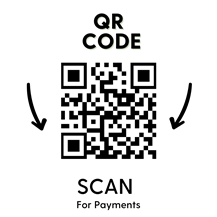
Image 1: QR Code
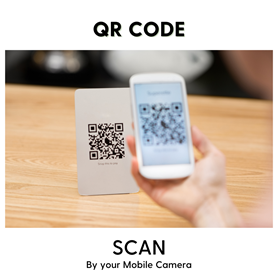
Image 2: Detection of QR Code by smartphone cameras
QR (Quick Response) technology isn't new. It has a long past. Established in 1994 in Japan, it was used to assist factories to monitor items on production lines but smartphones are what have propelled QR codes into wider use. Scanning a barcode and being routed to a transaction, advertisement, or other online portal is now simple. Because it does not require rummaging through one's wallet or giving personally identifiable information, the technique appears to be easy and secure.
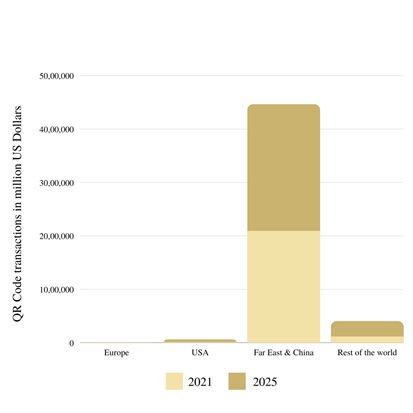
Image 3: Forecasts of QR Code transactions from 2021 to 2025 across regions (million US Dollars) (Source: Statista, 2021)
Some facts on QR Code’s usage by regions:
(Source: Statista, 2021 & Beaconstac - A Proximity Marketing Company - Beacons | NFC | QR Codes)
The Middle East & Africa:
- Consumers demand easy and convenient ways of interacting with merchants post-pandemic, with 46% of South Africans intending to use more payment techniques like QR codes in the coming year.
- One significant Payment Operator from Africa saw a 412 percent increase in QR code payments between March 2020 and February 2021, as digital payments have become the norm for shopping in person or online, according to the company.
Europe:
- Six European mobile e-wallet companies are partnering with China on a QR code mobile payment network that will allow users of each wallet to pay for transactions in 10 European nations.
- According to figures, the overall transaction value of all QR code transactions in European nations is anticipated to increase by 37% to $2.2 billion by 2025.
United States of America:
- Latin America's QR code transactions are anticipated to increase by 3500% by 2025, reaching $21.2 billion, up from $582 million in 2021.
- The transaction value of QR code transactions is expected to rise from $8.9 billion in 2021 to $27.2 billion in 2025 in North America, a 205% increase.
Far East Asia & China :
- Biggest representative of QR Payments.
- QR Code transactions in the Far East and China are going to increase at 13.373%, rising the value from $2092080.58 million in 2021 to $2371854.39 million in 2025.
Studies on payment modes used by our customers in emerging economies suggest that the use of QR codes for digital payments may surge to between 250% to 350% in the coming 3 years.
QR codes are rapidly making their way into the wider market, promoting consumers all over the world to go for digital wallets and contactless payments. Many tech firms and operating systems like iOS and Android are laying the way for the QR code boom, by including QR readers inside the camera applications; otherwise, in the initial periods, scanning them needed specialized software, which drastically limited their usage.
The reasons behind the popularity of QR code-based payment are convenience, ease of use and security. The buyer just needs to scan the code shown by the store at checkout, validate (or enter) the overall amount to be paid, and complete the transaction by confirming the payment source and authenticating their password or PIN.
It can also work in the reverse direction. The store may scan the barcode on the customers’ smartphones to send a payment receive request. All a customer has to do is verify the amount to be paid and then enter the authentication code or password/PIN to validate the transaction.
Static and Dynamic QR Codes
QR codes could be Static and Dynamic.
- Static QR codes contain carry information that does not change (e.g., merchant’s payment handle) and may be printed or shown on a device. They can be seen at various boards, eateries’ menu cards, digital screens, hotels, etc. Users may scan the QR code, verify the receiver name/ID, enter the amount to be paid and then authenticate the payment using their authentication code.
- Dynamic QR codes carry information specific to order (e.g., order-ID, transaction amount, etc.). Dynamic QR codes make the payment process even easier for customers. When a customer scans the QR code, the code not only provides receiver’s identity but also the amount and the transaction reference. Payer only needs to verify the amount to be paid and then authenticate using his/her personal authentication codes on mobile.
In either case, the user does not need to share his/her account information or hand over the payment instrument (credit/debit card, etc.) to merchants.
How SECURE and EASY are QR-based Payments, both for Retailers & Consumers?
Yes, QR Codes are secure, to put it succinctly. Static QR Codes are machine-readable and can't be altered after they've been created. However, you may alter the data inside a Dynamic QR Code, but for that also you'll need access to the user account that produced it in the first place.
The QR Codes themselves are impenetrable to hacking. This is because they are made up of a Copy Detection Pattern, also known as a secure graphic, which is a digitized picture with an architecture that allows data to be lost irrevocably when stolen and reproduced. QR Code technology is not in and of itself a security issue. The information associated with the QR Code is the source of the security concerns.
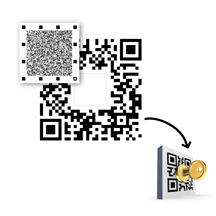
Image 4: Copy Detection Pattern in QR Code makes it secure
Duplicates usually have fewer data versus originals because of this Copy Detection Pattern characteristic. When a secure graphic is inserted into the digital picture of a QR code, it becomes a protected QR code with inherent copy protection. Threats from imitation and harmful links are significantly reduced, if not eliminated, once this technique is used.
As numerous high-profile data breaches have demonstrated, QR code payments are more secure than any payment cards because all sent data is secured, there's no need to save consumer payment details. Customers' payment/card data never leaves their device, thus hackers have zero to steal.
Using a QR code is convenient & less time taking than unlocking the digital wallets or withdrawing a credit/debit card from the purse. In other words, customers don't need to bring anything with them into the retailer except their smartphones. With the use of personal smartphones by customers for payments, retailers can also be saved from touching their cards in this pandemic era. For example, Let's say somebody goes to a grocery shop to get bread for breakfast; all they have to do is scan the QR code at the cashier and walk out with the desired packet of bread, getting an overall experience of touch-free payment, especially during this covid era.
Many businesses and retailers get insecure about the convenience of accepting payments through QR code but it's very simple to accept QR code transactions. All the businesses have to do is simply create a profile with a payment service company and then create a code using an App provided by them. With this QR code, they can focus on the business and sales, and offer a good customer experience for payment, rather than investing time and energy in collecting payments in physical form.
In short, QR-based payment is safe, convenient, and beneficial for both customers and retailers.
Revolution of eCommerce with the entry of QR Codes
The use-cases of QR codes are becoming increasingly popular across the world. In Western regions, Asia, and notably in China, QR codes are making a strong run.
By following listed use-cases, you will get to know that QR codes are utilized for a variety of personal and commercial applications.
- Using a QR code to order meals in a Restaurant (Touchless Menu Signage): With the rise of the pandemic, many restaurants and food chains have now been shifted to self-service. Customers may scan the QR code on their table to see a digital menu card and purchase meals from it.
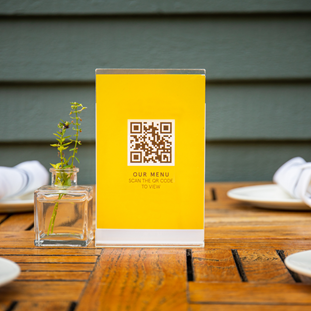
Image 5: Using a QR code for online Menu
- Using a QR code to shop for Products online: Nowadays, many posters, leaflets, and digital ads come with QR codes on them, which when scanned take consumers to an online shop for these products. The QR Codes are also instilled on the product’s packaging, which redirects the consumers to a short video, detailed information, and ‘how to use’ brief for the product. Many FMCGs are using this as an element of their marketing strategy.

Image 6: Using a QR code for Discount while shopping
- Using a QR code to attract people to Events: Event posters with QR codes are commonly used today, making it convenient for the attendees to scan and pay for the event. Apart from payment, these QR codes are also used to re-direct the people to detailed information about the event.
- Using of QR code by Street Vendors: Vendors on the street utilize QR codes to reduce lines and wait times by letting consumers purchase and pay using an online ordering system from their phones. This also gives an overall good shopping experience to customers.

Image 7: Street vendors with QR code
- Using a QR code to access Wifi: To avoid confusion regarding passwords of wifi and save time, many places have installed QR codes that an individual may scan and immediately connect to WiFi on their iPhone or Android.
- Using a QR code on Printed Materials: Posters and Digital Billboards are widely used, and having a QR code on them saves space while also providing a means for people to learn more. This is an excellent tool for lead generation and provides people with a digital extension to the content.
To summarise, QR codes are rapidly becoming the future of payment mechanisms with their easy, convenient and secure attributes.
How does Estel Technologies accelerate QR-based payments?
Estel Technologies adopted QR Codes within their platforms as a payment means, primarily for their huge convenience for in-store & online payments. Estel Mobile Money App can scan QR codes and resolve the coded data to payment information, enabling convenient and easy in-store payment.

Image 8: QR Codes as Mobile Pay Option
While this scanning capability is provided to mobile money subscribers, Estel has taken QR code payments to the next level by also adopting dynamic QR codes for retailers.
In Estel’s MultiPay Solution and Mobile Retailer App, retailers can generate both status & dynamic QR codes on-the-fly, so that buyers can simply scan the QR Code and authorize payment by tapping on “Pay”.
To know more, email us at info@esteltelecom.com






